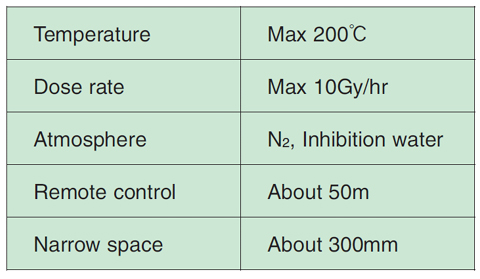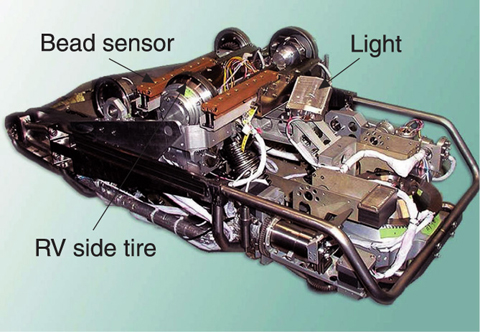Fig.1-27 The operational environment of the inspection machine (Photo of operation in the mock-up facility)
Table 1-1 Chief inspection conditions


Fig.1-28 External view of the inspection device
In-service inspection (ISI) by visual inspection is carried out to confirm the integrity of the main components of "MONJU" Fast Breeder Reactor (FBR). The reactor vessel (RV) contains both nuclear fuel and coolant sodium. Unlike a light water reactor, the examination area in FBR is an extreme environment where human access is not possible (Table 1-1). In order to inspect this extreme environment, a remote controlled inspection device (ID) was developed. The inspection-machine insertion device is installed on the operating floor where it is accessible to humans. The ID is taken down to the RV through a guide tube using a car gondola and it is inserted in the 300 mm clearance between the RV and guard vessel. After coming out of the gondola, the ID can run by itself, moving and inspecting the test area. The ID supports its own weight using the force of a spring. The remote control of the ID running between the trackless vertical wall surfaces is carried out using a 50m long cable. A bead sensor is used in this case to detect and follow the weld line that is to be visually inspected and inspected by a CCD camera (Fig.1-27). Until now, due to limited heat resistance and radiation durability it could employ only a 30,000 pixels fiberscope. However, the newly developed inspection device (Fig.1-28) uses a cooling system for a 410,000 pixels CCD camera, attaining a very accurate inspection.
The presence of sodium leakage marks is determined during the visual inspection. An attached electromagnetic acoustic transducer (EMAT) ultrasonic probe, which is now under development, checks and detects flaws before actual leakage occurs. Research and development are still continuing to improve the inspection device for use in extreme environments, for a better inspection and higher safety of the reactor components.
<Previous: 1-10 | Next: 2 Research and Development on Geological Disposal of High-Level Radioactive Waste >